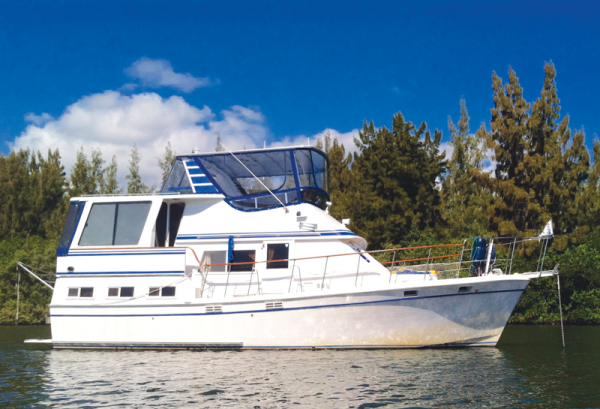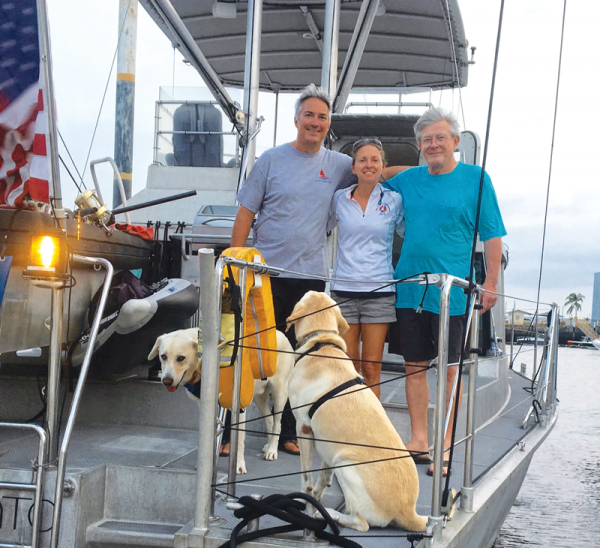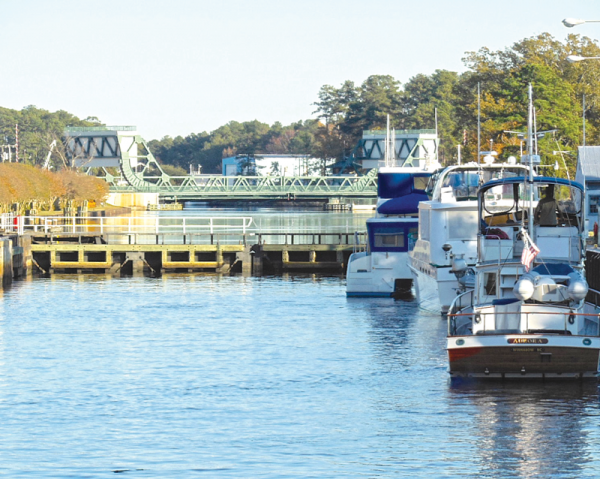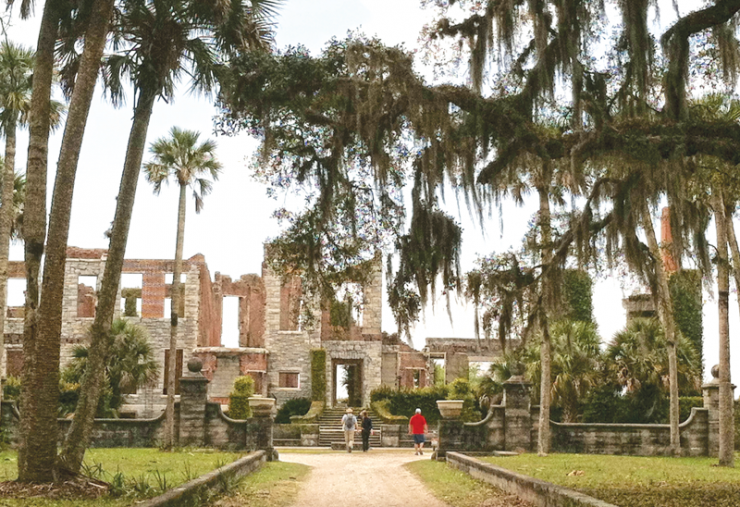Talk to boaters about the Atlantic Intracoastal Waterway (ICW), and the first thing you’re likely to hear is how tricky it can be to find your way through its countless shoals and misplaced daymarks. Or how long you may have to wait for drawbridges or locks to open. Or the frequently shifting channel in the Dismal Swamp. But many ICW veterans think of the 1088-mile waterway, which extends from Norfolk to Miami, as a multi-destination voyage. There are dozens of charming cities, towns, and villages that offer eye-pleasing scenery, lovely historic homes, good restaurants, and interesting boutiques that beckon you to stop overnight, or even stay for a week or two.

“The best thing about the ICW is all the places that you can stop and see,” says Carolyn Groobey, an Annapolis boater who transited the waterway out of curiosity one spring on the way home from a longer bluewater voyage with her husband, Chris. The Groobeys, both in their early 50s, are spending a sabbatical afloat on their 64-foot aluminum trawler, Toccata. Entering the ICW at Hilton Head, SC, and motoring north, the Groobeys logged (and amassed photos of) memorable stopovers in more than half a dozen communities along the waterway, from sophisticated, lots-to-do Charleston, SC, to Beaufort, Southport, and Elizabeth City, NC, and Georgetown, SC. “All of these are great stopovers,” Carolyn Groobey says. “It’s just an incredible variety. I think that’s really the beauty of the ICW.”

The waterway also is brimming with delightful surprises—from rivers, creeks, and marshlands with spectacular scenery to small communities that offer inexpensive dockage, welcoming townspeople, lots of bargain deals, and colorful special events. On a side trip to Elizabeth City on their 43-foot Bristol, Albetross (not named for the sea bird), Lynne and Jerry Hoot of Edgewater, MD, were amazed to find the town deep into the North Carolina Potato Festival. “Who knew?” Lynne Hoot recounts. “It didn’t seem to be that much about potatoes—it was just a great excuse to party. We had a terrific time.”
“If you’re looking for a cruising vacation, the core of it is the ICW,” says Jim Healy, who with his wife, Peg, frequently plies the waterway on their 36-foot Monk trawler, Sanctuary. To be sure, picking a great place and stopping there isn’t always easy. Other factors, such as weather, water depth, ease of navigation, distance, bridge-opening schedules, fuel, equipment problems, mooring facilities, and pending darkness frequently trump sightseeing and good restaurants when it comes to determining where to spend the night.
Even so, the Groobeys say, equip yourself with a good cruising guide, updated electronic charts, and a laptop or cellphone that can give you access to crowd-sourced ICW advisory websites. Be prepared to postpone your next day’s travel if necessary—and you’ll be able to hit the spots you want to see. Include some books about local history and homes as well. Indeed, the Hoots contend that the key to a successful voyage on the ICW is to be flexible. “If the weather is bad or you need repairs, there are all these beautiful small towns to visit and get what you need,” Jerry Hoot says. “Bad weather doesn’t last forever, and even if you stop you’ll probably arrive close to your original schedule anyway.”

What keeps boaters in a place for more than a night? “Having something there to do,” says Frank Mummert, an Urbanna, VA, boater who has taken several trips down the ICW with his wife, Suzanne, on their 45-foot ketch, Rockhopper. “We also appreciate it if it’s inexpensive and there’s good transportation. And we look for anchorages with some scenic quality to them.”
Frequently, great experiences tend to bring them back for a second stay. A few years ago, during their first trip down the ICW, the Mummerts took Rockhopper into historic Port Royal, SC, and ended up so enchanted that they spent 10 days in the city. They repeated the stopover on their most recent trip. “We would actually live there,” Suzanne Mummert says.
Here, based on interviews with several ICW veterans, are some places to visit and have fun along the Big Ditch (in order of appearance, heading south):
Beaufort, NC: One of the most popular stopovers on the ICW, Beaufort (pronounced BOH-fort) is steeped in nautical history, with a quaint but attractive downtown, art galleries, and bookstores, and a wide choice of good restaurants. Visit the North Carolina Maritime Museum and Watercraft Center. Ferries go to Shackleford Island and Cape Lookout.
Southport, NC: This medium-sized city on the southern border of North Carolina is a great place to stop and replenish. You’ll find food stores, boating supplies, and good restaurants. Its history goes back to the Spanish explorers in 1521. There are plenty of opportunities for walking tours. The summer months are packed with festivals.
Georgetown, SC: Don’t overlook this coastal jewel. The downtown is filled with pre-Revolution and antebellum homes, and there are plenty of good restaurants, boutiques, antique stores, and walking tours. Boat tours can take you to surrounding plantations, marsh islands, and beaches. With your own boat, visit Winyah Bay and the pristine Waccamaw River.
Charleston, SC: This seaport city is a favorite with ICW travelers no matter how many times they’ve been there. It’s filled with fine (and casual) restaurants, shops, museums, unusual historic homes, parks, other attractions, and special events. If you need provisions or boat repairs, there are plenty of choices. In May, there’s the world-renowned Spoleto music festival.

Savannah, GA: Sometimes overlooked by ICW travelers, Savannah rivals Charleston in historic homes, eye-pleasing scenery, great shopping and dining, abundant art and cultural opportunities, and year-around festivals and special events. Rent a car, and you’re close to Hilton Head Island, Thunderbolt, and Isle of Hope, a charming village.
Beaufort, SC: Like its North Carolina namesake, this Beaufort (pronounced BEW-fort) is, a charming, easy-to-tour seaport, with antebellum homes, museums, boutiques, and walking tours. Take a carriage ride through downtown, and then sightsee and window-shop. Once almost devoid of fine dining opportunities, Beaufort is enjoying a renaissance of good restaurants.
Fernandina Beach, FL: Governed successively by the French, Spanish, British, Mexican rebels, and the Confederacy, this attractive seaport community has a 50-block downtown historic district. It also is close (by boat or car) to Fort Clinch State Park, Cumberland Island National Seashore, and Amelia Island.
St. Augustine, FL: This historic northeast Florida city is best known for its Spanish colonial architecture and its 17th-century stone fortress, Castillo de San Marcos. It also has become a cruiser’s stopover. A must if you’re in the area in late November is the local Thanksgiving celebration for cruisers, which draws boaters from all over the East Coast. And that’s just our short list.
Don’t forget those tucked-away places that offer a quiet respite from ICW travel, such as Hampton, VA; Elizabeth City, Bel Haven, Oriental, Morehead City, and Ocracoke, NC; McClellanville, SC (a nature enthusiast’s favorite); and Vero Beach, FL.
Above all, cruising veterans say, the most important factor in any trip on the ICW is to take it slowly. “Next time we’ll spend a little bit more time coming back,” says Sue Bartlett, an Annapolis-area boater who made a round trip on the ICW with her husband, Chuck, on their 40-foot trawler, B-Attitude, and rushed home for Easter. “You want to leave time to enjoy it.”
By Captain Art Pine